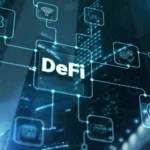Web3 gaming is poised to transform the gaming sector completely as we head toward the summer of 2025. By combining decentralized technologies, blockchain, and cryptocurrencies, Web3 gaming is not only changing our play but also our interaction, income, and ownership in digital environments. The terrain quickly changes from play-to-earn (P2E) models to immersive metaverses. Here is a summary of significant Web3 gaming developments and some top crypto gaming tokens to watch this summer.
Metaverse and Web3 Interoperability
The metaverse’s ongoing spread will define 2025 in one way or another. Originally a jargon, the metaverse has evolved into a fully realized, linked ecosystem, enabling users to seamlessly transition between virtual worlds and distribute assets such as NFTs and digital currencies across multiple platforms.

A more fluid and consistent Web3 experience results from in-game objects, including skins, avatars, or unique prizes, becoming increasingly transferable between games. This interoperability attracts both large developers and gamers by enhancing the value of in-game assets and fostering a more cohesive digital environment.
Play-to-Earn Evolution
From a niche novelty, the play-to-earn (P2E) concept has evolved into a popular mechanism enabling players to generate actual value via in-game actions. By 2025, however, this model will have developed into a more complex and sophisticated system based on simple incentives. These days, players are motivated not only for their in-game time but also for their talents, successes, and community service. Newer games include more complicated in-game economies, NFT staking, and governance participation, transforming the ecosystem into a more sustainable and fulfilling one for active players.
Furthermore, the caliber of Web3 games has improved since AAA companies are funding the field and creating top-notch creations appealing to blockchain aficionados and regular players. P2E games are, therefore, becoming more captivating since their graphics and narratives challenge those of conventional games.
Web3 Gaming Security
Strong security features become more important as the Web3 gaming ecosystem expands. As distributed finance (DeFi) and NFTs become more valuable, players’ digital assets attract greater attention and, hence, more targets for hackers. Developers of 2025 are thus giving improved security measures top priority. All meant to safeguard users’ in-game assets and personal information, these include multi-signature wallets, two-factor authentication (2FA), distributed identity management, and end-to-end encryption.
The growing emphasis on privacy also relates to the natural transparency of blockchain architecture. Blockchain technology allows players to keep ownership and visibility of their assets without compromising personal data, establishing a safer and more reliable environment for all involved.
Virtual Real Estate
The Web3 game experience is starting to include virtual real estate heavily. Players may now purchase, sell, and exchange virtual land, buildings, and assets—each expressed as NFTs—as gaming worlds become more immersive. These virtual real estate markets are expected to grow significantly by 2025; platforms like Decentraland and The Sandbox drive the change. In addition to gaming, players can rent or sell their digital assets to other players or companies, thus acting as an investment possibility.
This new kind of asset ownership opens the path to fresh types of digital entrepreneurship and goes beyond gaming. With some properties fetching millions of dollars, virtual real estate is swiftly becoming an accurate market with actual worth.
AI in Web3 Gaming
Improving player experiences in Web3 gaming mainly depends on artificial intelligence (AI). More dynamic and customized surroundings created by artificial intelligence by 2025 will be AI-driven NPCs (non-playable characters). For instance, they will react to player actions in more genuine ways, augmenting the interactive and unexpected nature of the game experience.
AI also allows for distributed economies, maximizing supply and demand for NFTs and in-game assets. This will result in a more flexible and responsive market, which will help developers and players. Game design also uses artificial intelligence to let creators construct richer, more immersive environments that may change in real time to suit players’ decisions.
Blockchain Gaming Pioneers
Pioneers in the play-to-earn concept, Axie Infinity (AXS) lets players trade, breed, and battle digital pets known as Axies. Updates like “Axie Infinity: Origin” and a sizable, devoted player base help the game to develop. If blockchain technology evolves, AXS might keep its supremacy, particularly if it improves its in-game economy and features.

Players of the virtual world Decentraland (MANA) can purchase, create, and profit from virtual land and assets. MANA is a significant token to watch as the metaverse grows and virtual experiences pique more interest. Major brands entering virtual environments will help confirm Decentraland’s position as one of the leading virtual reality platforms, therefore securing its future in gaming.
Under a distributed game environment, the Sandbox (SAND) lets players develop, own, and profit from digital goods. The platform has attracted much interest with well-known alliances, including Snoop Dogg and Adidas. SAND’s potential will keep growing as more businesses and developers enter The Sandbox’s Metaverse Use; it’s probably among the most often used tokens in the space.
Final thoughts
The summer of 2025 looks quite interesting for Web3 gaming. The gaming sector is about to undergo a revolution, bringing more player agency and economic possibilities as interoperable metaverses, advanced P2E models, and digital asset ownership take center stage. As this new terrain evolves, gaming tokens like AXS, SAND, MANA, ILV, and GALA will shape gaming. As this exciting business grows, players and investors should become involved in Web3 gaming.





